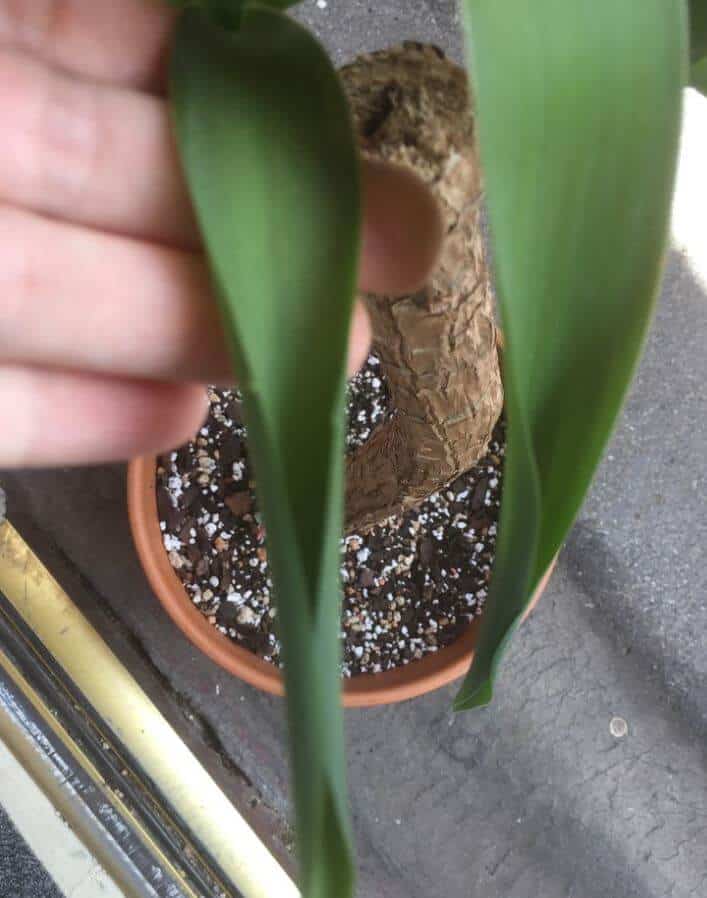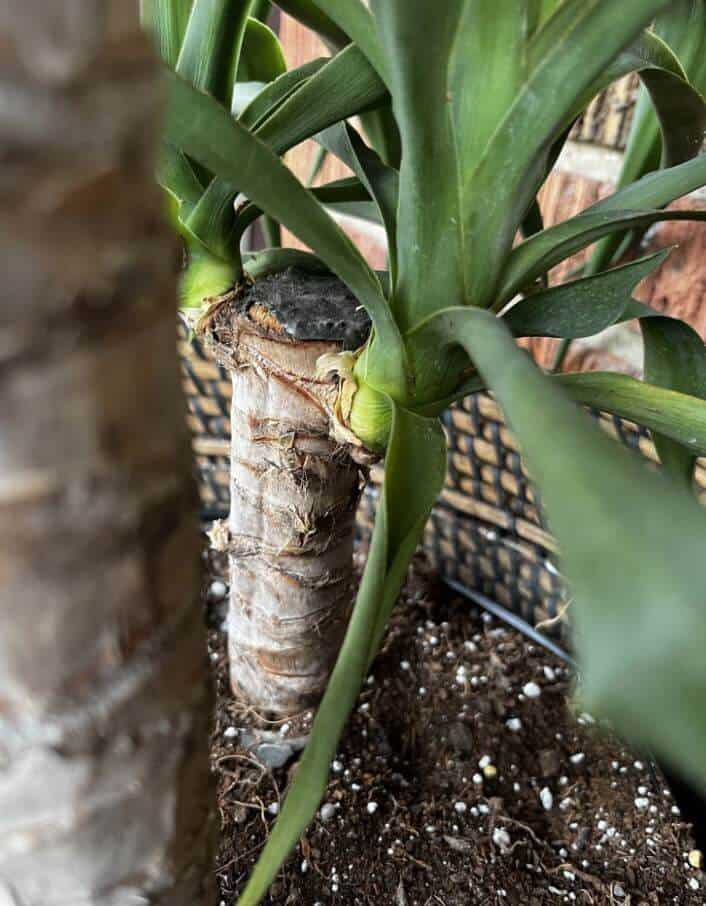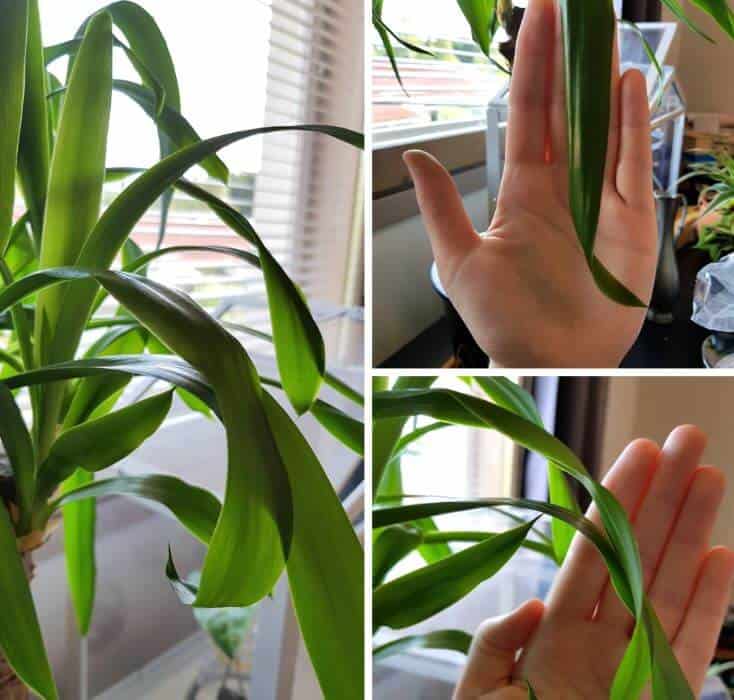Last Updated on September 7, 2023 by a Friendly Gardener
Due to their hardiness and delightful aesthetic, yucca plants are enjoying increasing popularity as of late. The Yucca genus hosts roughly 40 species in various shapes and sizes, so there is a yucca for everyone. While exceptionally easy to care for, like all plants, the yucca will have issues, the most common being curly foliage. So, if your yucca plant’s leaves are beginning to curl, you need to know this.
Why Are My Yucca Leaves Curling?

When yucca leaves curl, your plant tells you something is wrong. The most common issues that trigger yucca leaf curling include improper light, both too little and too much, as well as cold environmental temperatures, frost, or a pest infestation. Identifying the cause is essential to resolving the problem and aiding your plant in returning to a healthy state.
Improper Sunlight Exposure

Yuccas grow successfully in various natural habitats, including grasslands, deserts, and coastal areas. The important thing is that the location must provide them with the amount of sunlight that they require to thrive. Yucca curling leaves can signal too little sunlight is available or too much sunlight is arriving.
-
Too little sunlight exposure
Curly foliage often indicates that the plant is not receiving adequate sunlight. If foliage is also a darker hue than what you would consider normal, this is an ulterior sign that sunlight exposure is inadequate.
-
Too much sunlight exposure
The opposite can also happen, with Yucca plants surprisingly receiving too much sunlight. This may not be the case because yuccas grow successfully in desert areas. However, yuccas, like so many house plants, thrive in generous amounts of bright indirect sunlight. When foliage begins to curl, your plant may be telling you it is receiving excessive sunlight in its current location.
What to do
If you suspect your yucca is receiving inadequate sunlight, move it to a sunnier spot where it will receive lots of bright indirect light for its health.
With too much sunlight, you’ll need to move your plant to a location where it only receives limited direct sunlight and partial shade for the remainder of the day. Container-cultivated yuccas are easier to move about.
If you are growing your yucca in an outdoor garden, consider cultivating taller vegetation nearby to provide some supplemental shade for a part of the day. The rule is lots of bright but indirect light for a healthy and happy yucca.
Watering Issues

Yuccas have evolved in locations where water is scarce, requiring considerably less watering than most houseplants. One thing you can do to aid your plant is ensure that soil is loose and well-draining and that the plant’s container has enough drainage holes to guarantee that soil water retention does not result in soggy soil as this can lead to yucca leaves curling and eventually to a case of root rot.
What to do
Reduce your watering schedule by watering your plant less frequently. Check soil and container drainage to prevent potential fungal infections or root rot from developing. Most yuccas require less water than most houseplants.
Yucca leaves curling inward can also be caused by an inadequate water supply. Even if these plants are desert dwellers, they still require some moisture. Leaves may curl inward to reduce the leaf surface to save moisture lost through transpiration. Leaves may dry out, turn brittle, and curl inward.
What to do
Increase your watering schedule slightly to provide an adequate water supply to your plant.
Environmental Cold

Although a yucca plant is quite resilient in various environmental temperatures, these plants do not like cold spots. If your yucca is left to fend for itself in a cold location for a prolonged period, it may develop curling leaves, one method these plants use to protect themselves. They will curl foliage to prevent structural damage to leaf tissue.
-
Frost damage
While the yucca is a hardy creature, it still can suffer winter damage. Some varieties may manage better than others, but don’t be surprised if your yucca plant exhibits stem and leaf damage when subject to frost, often resulting in blackening and death. Freezing water will expand in size and potentially cause damage to leaf structures. Affected leaves may begin by curling, wilt, and then turn black or a dark brown before becoming crispy.
What to do
If your yucca is a smaller species and container cultivated, it can be transferred indoors. Outdoor garden-planted yuccas can generally not be moved and often will recover once the cold season passes. If your area is subject to prolonged cold spells, consider using a plant blanket or plastic tarp to cover your yucca as a protective layer. This will also help in preventing direct frost contact.
Pest Infestations

Sapsuckers love yucca plants. Typical visitors include aphids and thrips, particularly in favorable environments. Examine your yucca for signs of a pest presence, especially at the base of foliage or in small spaces that are less exposed. Aphids are usually white or green, while thrips appear as black specks or patches in severe infestations.
What to do
If you discover that your yucca has a pest infestation, you need to isolate it from other plants to prevent the spread of the pests. Examine all foliage and remove or prune off leaves that show visible damage. Dispose of them properly to avoid the infestation of other plants and vegetation. While it may not be possible to remove all insects manually, or you may not want to, you can spray your plant with an organic neem oil solution several times weekly until pests are gone and as a deterrent for future infestations.
Final Considerations
Yucca curling leaves are generally reversible if the issue is identified and corrected promptly. Pruning curly leaves is usually only recommended if a pest infestation results in foliage damage. Once you have fixed what is causing leaf curling, the foliage should return to normal in a few days. In environmental cold, vegetation may return to normal once the plant is moved to a warmer location, protected with a covering, the cold spell passes, or spring arrives.

